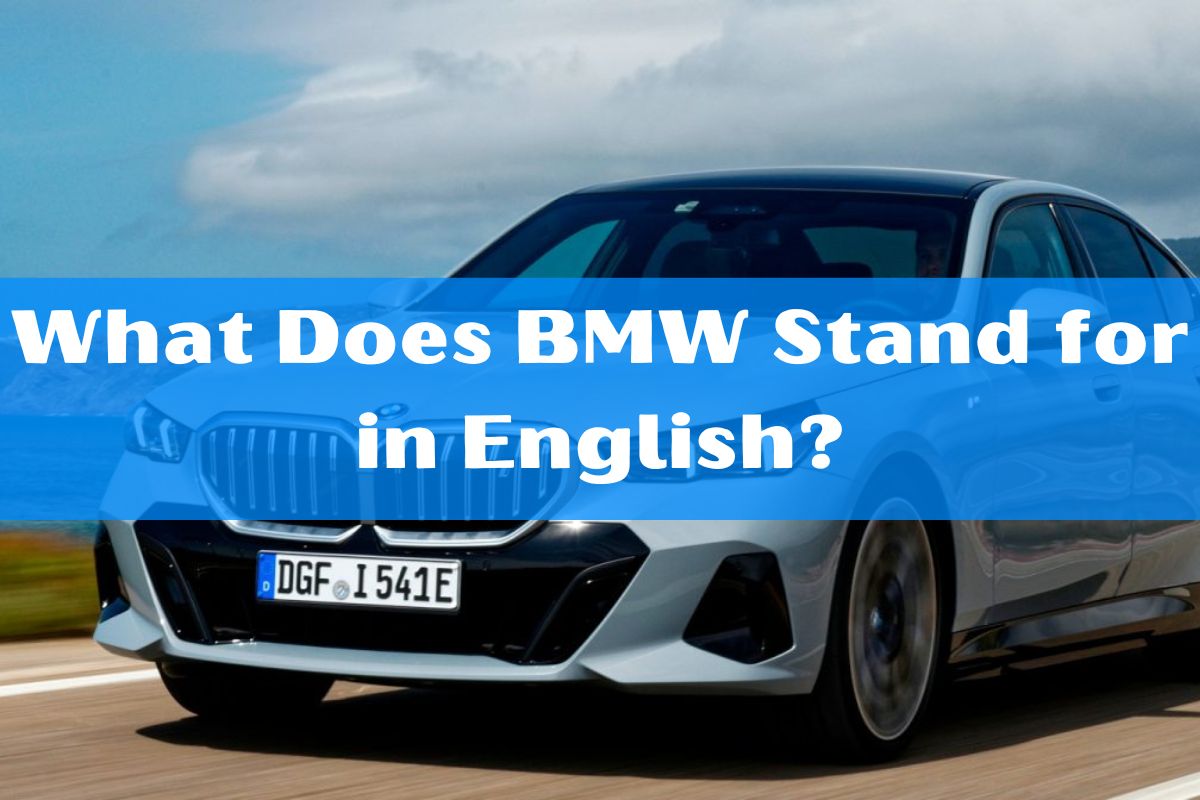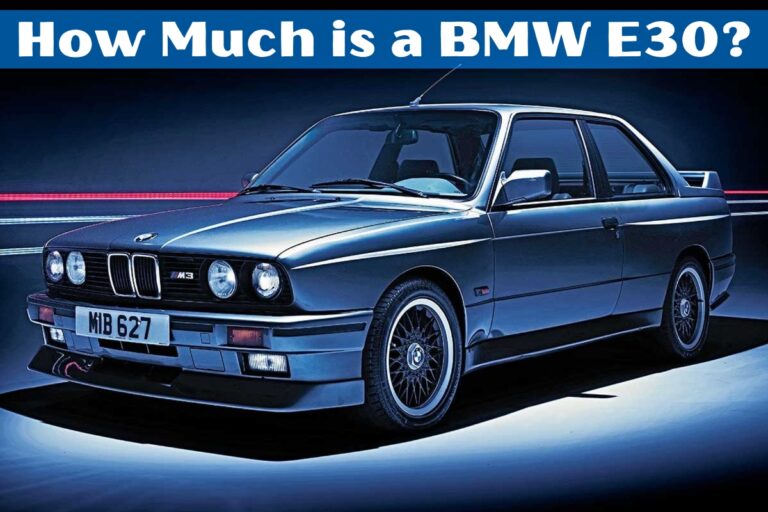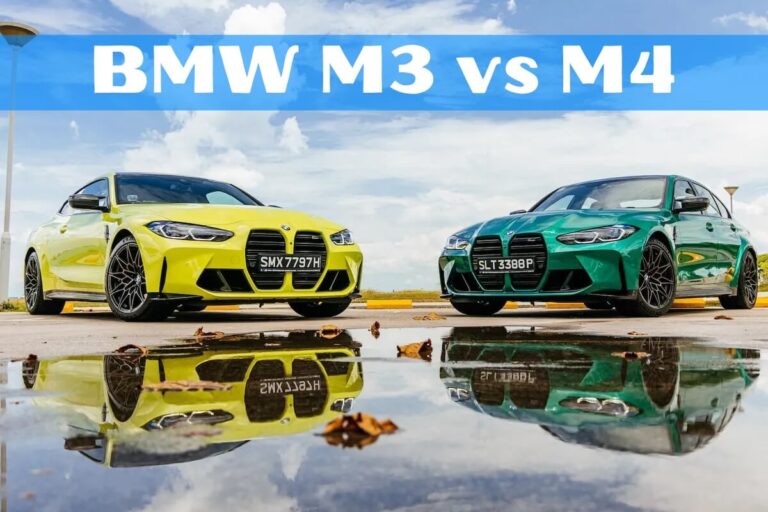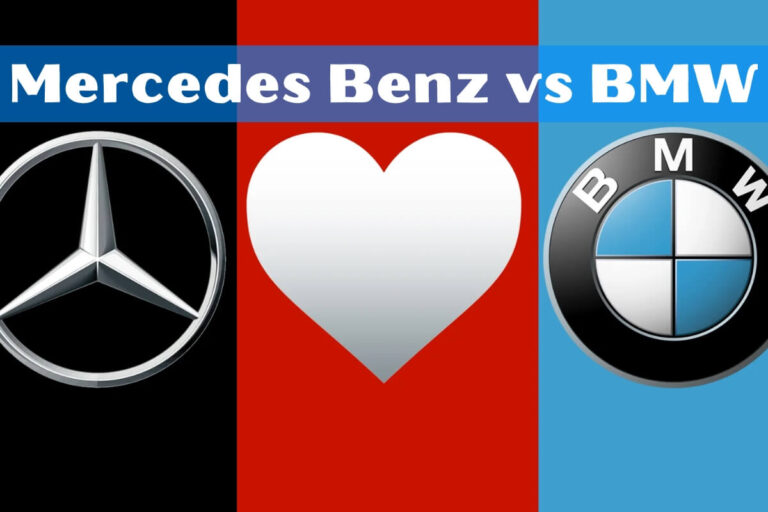What Does BMW Stand for in English?

What does BMW stand for in English? BMW is an abbreviation of the German name “Bayerische Motoren Werke”, which translates to “Bavarian Motor Works” in English. This iconic German automaker has a rich history and legacy that is deeply rooted in the southern state of Bavaria.
As a globally recognized brand synonymous with luxury, performance, and driving pleasure, BMW has captured the hearts and imaginations of automotive enthusiasts around the world. But beyond the sleek designs and thrilling driving dynamics, there’s a fascinating backstory to the origin of the BMW name and what it represents.
In this comprehensive guide, we’ll dive deep into the meaning behind the BMW acronym, explore the company’s origins in the Bavarian region of Germany, and uncover the truth behind the persistent propeller myth surrounding the BMW logo. We’ll also look at how the brand has evolved over the decades while maintaining its core identity and commitment to engineering excellence.
The Bavarian Roots of BMW
The story of BMW begins in 1917, when the company emerged from a renaming of the Rapp Motorenwerke, an aircraft engine manufacturer based in Munich, the capital city of Bavaria. While the company name changed, the technical expertise, assets, and workforce of the original Rapp Motorenwerke remained intact.
At the time, there was no need for a formal BMW logo or emblem, as the young company was primarily focused on producing and maintaining aircraft engines for the German Air Force during World War I. It wasn’t until October 1917 that the first official BMW logo was registered, featuring a round shape similar to the old Rapp logo, with the letters “BMW” encircled by a black ring.
Interestingly, the inner circle of this original BMW badge displayed the state colors of Bavaria – white and blue. However, these colors were arranged in the inverse order compared to the traditional Bavarian heraldic pattern, likely due to trademark laws at the time that prohibited the direct use of state symbols on commercial logos.
This connection to Bavaria and the company’s Bavarian roots are a fundamental part of the BMW brand identity. The name “Bayerische Motoren Werke” (Bavarian Motor Works) reflects the company’s origins in the German state of Bavaria, which has long been a hub of industrial innovation and technological expertise.
The Persistent Propeller Myth
Over the years, a persistent myth has emerged surrounding the meaning of the BMW logo, with many people believing that it depicts a stylized aircraft propeller. This interpretation can be traced back to a 1929 BMW advertisement that featured the company’s emblem superimposed on a spinning propeller.
At the time, BMW was branching out from its aircraft engine roots and beginning to produce automobiles and motorcycles. The propeller imagery in the advertisement was likely an attempt to highlight the company’s aviation engineering expertise and connect it to the new land-based vehicles.
In 1942, BMW further reinforced this propeller association when a publication called “Flugmotoren-Nachrichten” (Aircraft Engine News) featured an article that backed up the story of the BMW badge representing a spinning propeller. This was accompanied by an illustration showing the logo overlaid on a rotating prop.
Despite these early efforts to link the BMW logo to a propeller, the truth is that the emblem’s design was actually inspired by the Bavarian state colors and heraldic tradition, not an aircraft component. BMW did little to actively discourage the propeller myth over the years, and the urban legend has persisted to this day.
The Evolution of the BMW Brand
While the origins of the BMW name and logo are firmly rooted in the company’s Bavarian heritage, the brand has undergone a remarkable transformation over the decades, evolving from an aircraft engine manufacturer to a global automotive powerhouse.
In the early years, BMW’s primary focus was on producing and maintaining engines for the German Air Force. However, as the automotive industry began to gain momentum, the company pivoted its attention to developing high-performance vehicles, including motorcycles and prewar automobiles.
Today, BMW is renowned for its lineup of luxury sedans, sports cars, SUVs, and electrified models, all of which are engineered to deliver an unparalleled driving experience. The brand’s commitment to innovation, technology, and engineering excellence has cemented its reputation as one of the world’s most prestigious automotive manufacturers.
Despite this evolution, the company’s Bavarian roots and identity have remained a core part of the BMW brand. The iconic blue and white color scheme, along with the distinctive roundel logo, continue to be a prominent feature across the company’s products and marketing efforts.
The New BMW Logo and Brand Communication
In recent years, BMW has unveiled a refreshed brand identity and logo that reflects the company’s ongoing transformation and adaptation to the digital age. The new, more transparent BMW emblem is designed to convey a sense of openness and clarity, inviting customers to become even more closely connected with the brand.
According to Jens Thiemer, Senior Vice President of Customer and Brand at BMW, the updated brand design is geared towards the challenges and opportunities presented by digitization. The minimalist, graphically restrained logo is intended to provide BMW with the flexibility to seamlessly integrate the brand across a wide range of online and offline touchpoints.
“BMW becomes a relationship brand,” Thiemer explains. “The new communication logo radiates openness and clarity. With this new transparent variant, we want to invite our customers more than ever to become part of the BMW world.”
This evolution of the BMW brand identity symbolizes the company’s commitment to the mobility and driving pleasure of the future. While the core meaning of the BMW name – Bavarian Motor Works – remains unchanged, the brand’s visual representation continues to evolve to meet the changing needs and expectations of its global customer base.
Conclusion: Embracing the Bavarian Legacy
At its core, BMW is a brand that is deeply rooted in the Bavarian region of Germany, where it was founded over a century ago. The acronym “BMW” may be recognized worldwide, but its true meaning – Bayerische Motoren Werke, or “Bavarian Motor Works” in English – is a testament to the company’s enduring connection to its origins.
From the inverse representation of the Bavarian state colors on the original logo to the company’s ongoing commitment to engineering excellence and driving pleasure, the BMW brand has consistently embraced its Bavarian heritage. Even as the company has grown into a global automotive powerhouse, this regional identity has remained a fundamental part of its identity and legacy.
As BMW continues to evolve and adapt to the demands of the modern automotive landscape, the meaning and significance of the BMW name will undoubtedly continue to resonate with enthusiasts and customers around the world. Whether you’re drawn to the brand’s rich history, its commitment to performance, or its forward-thinking approach to mobility, one thing is clear: the Bavarian roots of BMW will always be an integral part of what makes this iconic German marque so special.






